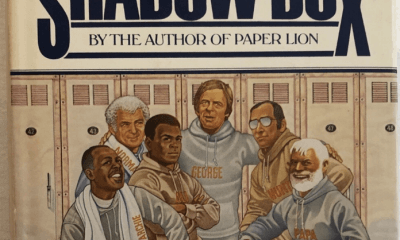Featured Articles
Mellow Mayweather Says Past Antics Were Part of “Business Plan”
 Floyd Mayweather hopped on a conference call Wednesday at 6:20 PM ET to hype his Sept. 14 clash with Canelo Alvarez in Las Vegas.
Floyd Mayweather hopped on a conference call Wednesday at 6:20 PM ET to hype his Sept. 14 clash with Canelo Alvarez in Las Vegas.
“Money,” who will be on the cover of ESPN The Magazine this week, for their “Fighting Issue,” said he's happy that his success means his kids grow up comfortably and will get great educations as well. He said he'll look back and be happy that he brought attention to the smaller weights, and also worked on “cleaning the sport up.”
He said he doesn't want to stack Mayweather Promotions with a ton of fighters, but that he will work with fighters, and show them the right way to get to the next level.
Floyd was asked how happy he was with his family situation. Some days are good, others are less so, he said. You have to smile on both sunny and rainy days, he stated.
He and his dad are both perfectionists, he allowed, but every day he tries to be a better person.
Floyd was asked if it was easier to get a mega-marquee fight now than when he was coming up. “It's a lot easier now,” he said, and there are too many champs, too many belts. “We should have one belt (per weight class) and that's it,” he said. The sport is “real routine now,” he stated.
He said that he's fought guys in their prime, guys who are holding belts, and so he feels he's given his all in the game. He said he will be “a lot sharper this fight” than he was against Robert Guerrero in May, because he'd been off a year. He wasn't impressed with his showing against the Ghost.
Floyd said this fight has become a bigger deal because Canelo has big appeal.
He was asked if he's mellowing with age. He implied all his misbehavior was part of a “business plan.” He said he's advised Adrien Broner to give the antics a rest sometimes.
Floyd got a bit salty when he thought a caller wanted to talk about Miguel Cotto, and told him to knock it off. He said that Canelo couldn't likely learn anything from that Mayweather-Cotto fight, except how to lose.
There were some other questions, such as if Floyd likes tennis. There were no questions on the Canelo fight, how that could go down, perhaps strangely. All in all, this was a most mellow Floyd, and it syncs with what I read in Tim Keown's ESPN The Magazine feature, about Floyd no longer feeling the need to, or being willing to, put on the black hat, and play the villain. I do wonder if and when that will come out again..or did the prison experience humble him, and, as his dad say, give him time to ponder, and perhaps, grow his sense of perspective?
Follow me on Twitter.
-

 Featured Articles3 weeks ago
Featured Articles3 weeks agoAvila Perspective, Chap. 330: Matchroom in New York plus the Latest on Canelo-Crawford
-

 Featured Articles2 weeks ago
Featured Articles2 weeks agoVito Mielnicki Jr Whitewashes Kamil Gardzielik Before the Home Folks in Newark
-

 Featured Articles4 weeks ago
Featured Articles4 weeks agoAvila Perspective, Chap 329: Pacquiao is Back, Fabio in England and More
-

 Featured Articles3 weeks ago
Featured Articles3 weeks agoOpetaia and Nakatani Crush Overmatched Foes, Capping Off a Wild Boxing Weekend
-

 Featured Articles2 weeks ago
Featured Articles2 weeks agoCatching Up with Clay Moyle Who Talks About His Massive Collection of Boxing Books
-

 Featured Articles4 weeks ago
Featured Articles4 weeks agoFabio Wardley Comes from Behind to KO Justis Huni
-

 Featured Articles1 week ago
Featured Articles1 week agoMore Medals for Hawaii’s Patricio Family at the USA Boxing Summer Festival
-

 Featured Articles4 weeks ago
Featured Articles4 weeks agoDelving into ‘Hoopla’ with Notes on Books by George Plimpton and Joyce Carol Oates















